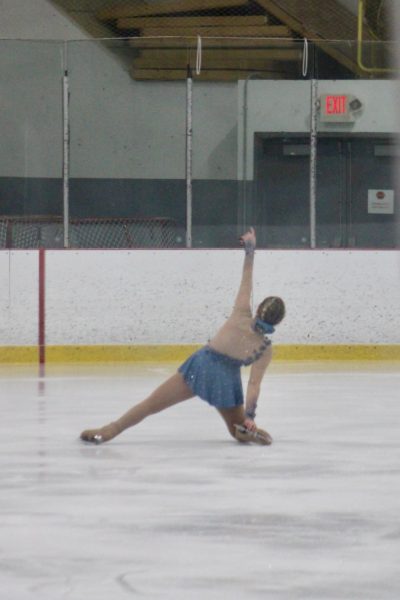GNA’s got talent: Liam Carcieri
Fencing is an age old sport which was first taught throughout Europe in the 1300’s. However, fencing as we know it today became popular in 18th century Italy. It has evolved from the “honor duels” of the past. They were rarely deadly but still dangerous.
Today, fencing has been developed into a fun, safe, and competitive sport. However, much like the old duels, modern fencing involves two people with a sword each, competing for a certain score of points.
Fencing is a competitive sport which requires a certain amount of skill. The games themselves, referred to as “bouts,” are played until an allotted time runs out or until one of the fencers reaches fifteen points. Each bout is played in three periods of three minutes, allowing for one minute of rest for the fencers between each period. The points are earned by landing a “touch,” successfully stabbing your opponent within their target area. After any touch is landed, off target or on target, the referee will yell “Halt!” and review the action and award points accordingly. Points can also be awarded through penalties. These points would be awarded to your opponent if you complete a wrong action. To win a fencing match, you need to reach the maximum score of 15 points or by simply having more points than your opponent when time runs out.
There are also team tournaments. In this instance, teams of three go against each other with the scores from individual members’ bouts being added together giving each team a maximum of 45 points.
In fencing, there are three possible weapons: Foil, Epee, and Sabre. There are many distinct rules and target areas that are specific to each sword. The Foil is subject to a concept called “right of way” which is used to decide who gets the point in close calls and has it’s target area as being the torso. The Sabre has a target area of the entire upper body. The Epee has no “right of way” and the entire body is considered an acceptable target area, this even includes the feet and hands of your opponent.
Even though fencing uses swords, it has been made completely safe for the participants. The tips of the swords, except for the sabre, which doesn’t involve any stabbing motions, are capped with rubber tips. In electric fencing, the swords are protected with shock absorbing pressure sensitive tips which allows for a machine to detect touches. Fencers also wear special protective gear on their bodies. It is important for fencers to remember that they are still handling a weapon, and safe behavior is very important while fencing.
The Greater Nanticoke Area High School has always boasted a talented and gifted student body. Here at GNA, we have seen many of those talents first hand. From riveting performances at school plays to intriguing artwork adorning the school halls, the talent at GNA is second to none. At the Greater Nanticoke Area High School, we feel it is important to get involved in extracurricular activities for many reasons. The GNA Insider has made a point to recognize the skills and talent that can be found in our school. Liam Carcieri, a junior here at GNA, has been fencing for the last two years. I had the chance to sit down and talk with Liam about his experiences.
What sparked your interest in fencing?
I’ve always had an interest in Medieval and Renaissance warfare and combat, so fencing was just a natural and fun way for me to turn that interest into a hobby.
Where do you fence?
The Northeast Fencing Alliance usually meets on Mondays in the basement of Holy Trinity Lutheran Church in Kingston. The club is run by Ray Stedenfeld.
What skills are required for this sport?
The wonderful thing about skills is that they can be learned. There are no skills needed in fencing that can’t be taught and learned. Of course, there are things that are beneficial to have, like fast reflexes and a strategic mind, but ultimately anyone who wants to fence and has the drive to learn can do so.
What has fencing done for you?
It’s kept me active and in shape and has definitely improved things such as motivation and confidence. Also, I get to stab people in a safe and friendly way.
Do you plan to continue fencing throughout college?
Yes, of course. Fencing is a passion of mine and has inspired aspirations to pursue other martial arts such as HEMA (basically, gearing up in authentic medieval armor and fighting with medieval weapons).
Would you ever consider teaching a fencing class /course?
At some point I would like to, once I feel I’m skilled enough to be beneficial to a new generation of fencers.

My name is Madelyn Rose Bugdonovitch, and I am a senior. I am currently attending college part-time along with high school through our school's Dual Enrollment...







